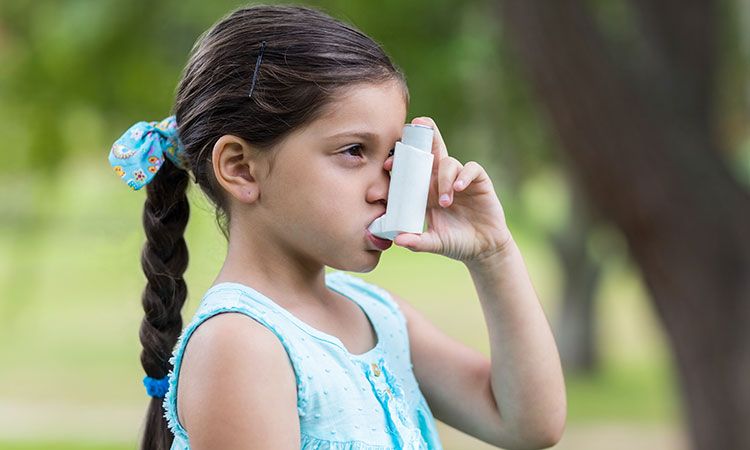All you wanted to know about childhood asthma
Asthma is a chronic inflammatory disease in which the airway becomes sensitive to allergens. The lining of airway becomes swollen, muscles that surround the airways get tightened and increased mucus production takes place. This causes airway narrowing making it difficult for a child to breath and recurrent cough & phlegm production ultimately leads to asthma.
Asthma is a very high prevalence and most common chronic disease affecting children. Each year, there are approximately 2 million emergency room visits for asthma.
Children who take antibiotics before age four have 400 per cent more chances of developing asthma than others. During spikes of air pollution, asthma hospitalization generally increases from 20 per cent to 30 per cent.
It’s very important for parents to seek prompt care for any child with asthma.
Causes for childhood asthma
The exact cause of asthma is not known. It is partially inherited and other environmental factors, infectious and chemical factors plays major role. Approximately 40 per cent of asthmatic adults have asthmatic children.
After a child is exposed to a certain trigger, the body releases histamine and other agents that can cause inflammation. In response body also releases other factors that can cause muscles of the airways tighten or become smaller. In such cases, there is increase in mucus production, which sometimes blocks airway passage. Exercise at times can also cause asthma in children (especially if their immunity is low and they are more prone to infections).
An immediate exposure to the allergens leads to swelling and narrowing of the airways and leads to further inflammation of the airways and obstruction of airflow.
Risk factors for childhood asthma
The rise in childhood asthma prevalence over the last 30 years in industrialized countries has coincided with a substantial change in dietary habits.
Therefore, the hypothesis was proposed that dietary change may be a contributory factor for the development of atopic diseases.
In general, the intake of fresh fruit and vegetables, milk, and fish has been replaced by the consumption of highly processed foods in western societies and increasingly in many developing countries. In preschool children, a diet high in polyunsaturated fats significantly increased the risk of recent asthma. Other risk factors include:
- Passive smoking, maternal smoking during pregnancy
- Low levels of intake of the antioxidant vitamin C have been associated with the increasing prevalence of childhood asthma
- Premature and Low birth weight children
- Respiratory distress syndrome
- Bronchopulmonary dysplasia/chronic lung disease
- Family history of asthma
- Recurrent Viral infections
- Air pollution, Allergen exposure: house-dust mite and cat allergen concentrations
Symptoms of childhood asthma
- Wheezing and coughing often continue for days or weeks
- Nocturnal wheezing
- Shortness of breath
- Rapid and difficult breathing
- Fatigue
Impact of asthma
- Quality of life is affected: It negatively impacts the quality of life. Absenteeism in school is normal obviously affecting the grades of the child and overall performance in school.
- Psychological impact: Child and/or parent may suffer from anxiety and depression. Presence of behaviour problems can be seen and it also affects the child self-esteem of the child.
Diagnosis
Diagnosis of asthma can be done by medical history, physical examination and laboratory tests, which may include:
- Quick check on frequent infections and chronic cough
- Spirometry-
- Chest X-ray
- Blood tests: IgE levels,ESR
Homoeopathic treatment for asthma
Homeopathic medicines are natural medicines which strengthen defense systems, improve healing, reduce severity, duration and frequency of cough, enhance nutrient absorption and assimilation, help in reducing absenteeism in school and improve quality of life. These medicines stimulate specific immune response thus helping to fight infection naturally.






